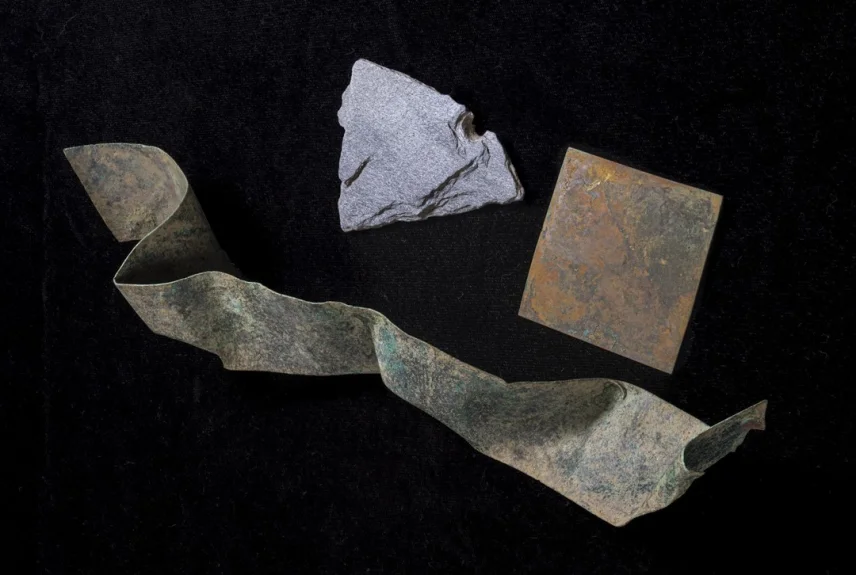At Mount Vernon, the Architecture and Archaeology teams often work together to solve puzzles.
While excavating the North Grove (in preparation for the Mansion Revitalization Project), archaeologists found a significant number of copper sheets and slate fragments. The slate fragment pictured above has a nail hole, which is characteristic of roofing slates. However, George Washington used wood shingles, not slate, on his buildings.

Washington purchased hundreds of thousands of wood shingles for Mount Vernon during his lifetime, most of them split from cypress trees cut in the Dismal Swamp of southern Virginia. (MVLA)
Learn More About Washington's Roof
Together, the teams determined that these copper and slate fragments are likely remnants of the termite proofing installed in the Mansion and outbuildings in the 1930s, which include copper termite shields and flat layers of slate.


